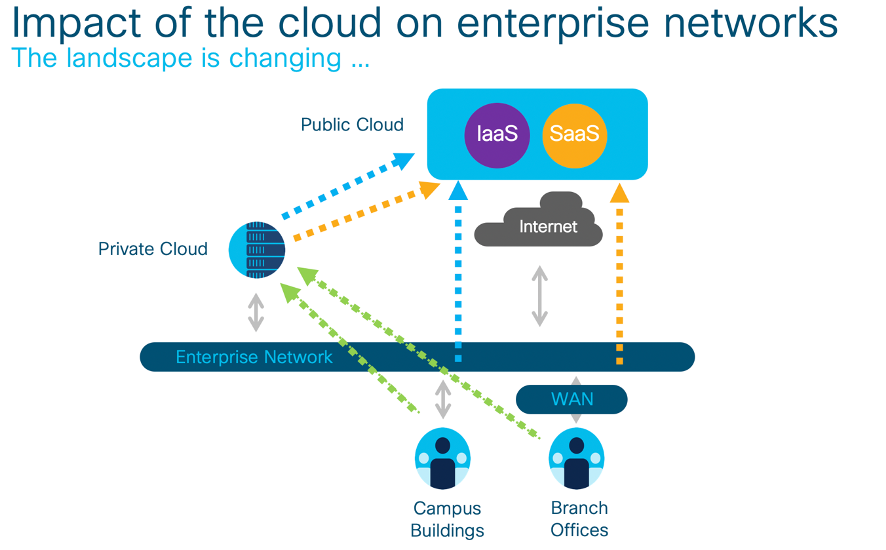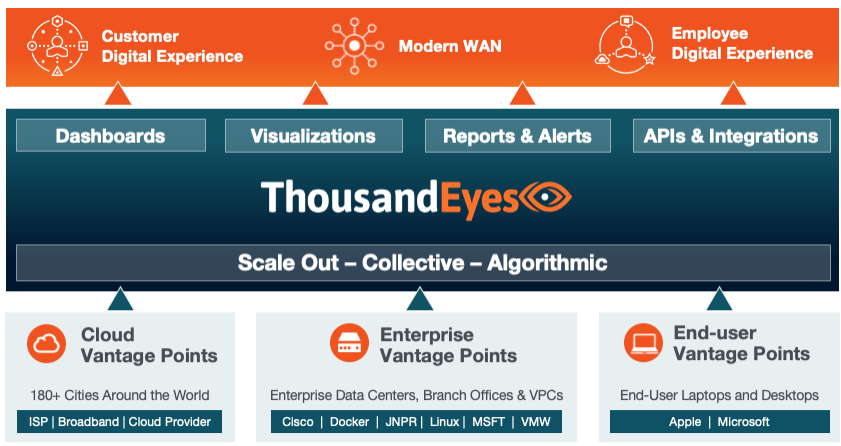Today’s next normal has established new realities for businesses in every industry. Employees are working from home and will continue to do so into the foreseeable future, customers are discovering, researching, and buying products and services online, and as a result, there’s an increased reliance on flexible multicloud-powered web and mobile applications.
Naturally, the cloud is growing in prominence, and along with it the increased reliance on the internet, and digital experiences provided via cloud-based solutions, to customers and employees have become paramount.
In my opinion, monitoring and managing digital experiences is a critical step in any organization’s journey to becoming a resilient digital enterprise. Hence, business leaders must pay careful attention to Management Guru Peter Drucker’s words “what gets measured, gets managed” and find a way to understand every dependency in the digital supply chain, both within their own infrastructure and beyond – into the wider internet.

Cisco has always been an important partner to such organizations and brings together two powerful visibility platforms – AppDynamics and ThousandEyes – that enable enterprises to gain an entirely new level of observability and visibility, making it easy for them to overcome the illusion of control over digital experiences.
End-to-end visibility removes bottlenecks and improves digital experiences
Despite the best effort of IT teams, the goal of measuring an application’s performance is a lofty one because it involves a rather complex digital delivery supply chain. Application performance is dependent on the infrastructure where the app is hosted – on prem or cloud, the architecture of the app, alongside the various microservices communicating between data centers, public cloud VPCs, and SaaS clouds. In addition, how the application is delivered to the end-user or consumer is reliant on a plethora of external dependencies including DNS providers, CDN providers, and ISPs that the enterprise does not own or control.
At Cisco, we understand that the lack of clarity can blind enterprises to their biggest opportunities and threats in the new normal. To thrive in a connected world and ensure business continuity, enterprises need complete service visibility into the end-to-end digital supply chain, all the way from the user to the application, through any network.
Clients across industries, be it in banking and financial services, retail and e-commerce, education and e-learning, or any other, can take advantage of Cisco solutions such as AppDynamics which provides excellent insights about their application’s performance, and ThousandEyes which provides the intelligence as far as external networks and their associated dependencies are concerned.

To understand this better, let’s visualize ‘business as usual’ for a retailer in the current scenario. Customers now prefer e-commerce over in-store purchases which has resulted in increased traffic for the company’s web application or online portal.
However, complete visibility into the performance of the network and applications that are powering the customer’s digital experience is difficult to achieve without products like AppDynamics and ThousandEyes. Further, without visibility into the wider network outside their direct control, it’s impossible for the company to understand where bottlenecks exist and how it impacts the experience of a particular customer segment at any given point in time.
Identifying bottlenecks proactively, on the other hand, facilitates conversations with the right partners to deliver real change, and ultimately, better digital experience to customers. Having insights and actionable data also drives accountability and improves collaboration across the entire ecosystem.
Personally, I find the ability to look at the external picture very interesting, and for good reason. On the internet, due to a lack of visibility and accountability, the mean time to detect (MTTD) and the mean time to resolution (MTTR) suffer. With the internet becoming more and more central to the performance of critical business applications, operations teams struggle.
Where does the magic really happen?
When we look at a simplified enterprise architecture diagram (below), with all the branch offices, data centers, public clouds, SaaS applications, remote workers, and so on, which are connected via the internet (and maybe a private MPLS solution) – what we realize is that the forward-looking business leader wants to see this environment as one ecosystem. That’s how they’ll be able to zoom in on the elements of their experience that need improvement.

At first glance, ‘monitoring’ the internet beyond the bounds of the client’s own infrastructure and architecture sounds impossible. However, Cisco’s timely acquisition and integration of ThousandEyes, makes it doable.
Here’s what happens behind the scenes: ThousandEyes has set up thousands of software vantage points across globally distributed providers including, Internet Service Providers (ISPs), broadband, and public cloud networks. These agents serve as simulated users and can help capture availability and performance data from the network journey or application journey as though it was being provided by actual users.

In a nutshell, customers that depend on their applications staying online and running as planned need to monitor and optimize application performance, visualize their entire WAN, and understand their ISP transit and outages. Cisco makes it possible – and easy to deploy and deliver.
The next normal is here to stay, as is our dependence on the underlying architectures that power the applications, cloud, and online services we rely on to do our jobs and live our lives. In just a few months, digital transformation efforts have accelerated at unprecedented speed and scale.
With the tools to enable comprehensive visibility into applications and services delivered to customers and employees, companies can move past the illusion of controlling the experience they provide to customers, and actually measure and manage factors that really make a difference. This will differentiate leaders in the next normal.